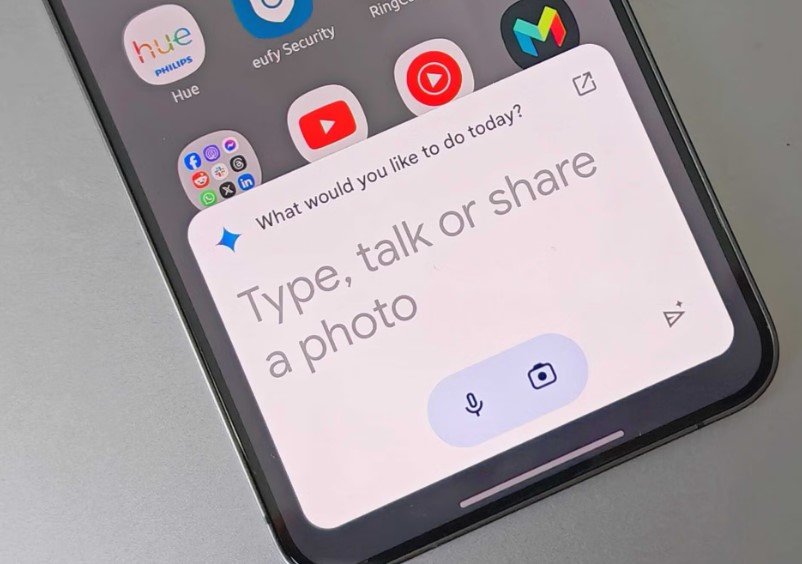Google’s latest move in the AI arms race isn’t about power. It’s about balance. And its newest model—Gemini 2.5 Flash—is aiming to do more, with less.
The company officially introduced this new model on April 9, pushing it into its Vertex AI platform, where developers are already building and deploying large-scale AI apps. The twist? Flash isn’t trying to be the smartest model in the room. It’s trying to be the fastest and most cost-efficient without breaking things.
A Workhorse for the Real World, Not Just Research Labs
Forget flashy demos and unrealistic benchmarks. Gemini 2.5 Flash is built for the messy, fast-paced, and wallet-conscious world most companies live in. Think customer service bots that need to reply instantly. Or apps that scan thousands of documents in real-time without lag.
Google’s team called it a “workhorse” in a blog post, emphasizing speed, scalability, and lower costs.
One sentence stands out: “You can tune the speed, accuracy, and cost balance for your specific needs.” That basically sums up the whole pitch.
This model doesn’t try to outwit GPT-4. It tries to get stuff done fast and cheap.
No Tech Specs, No Safety Report—Yet Still Promising
Let’s get one thing out of the way—there’s no detailed technical documentation for Flash. No model card, no safety benchmarks, no fine print.
Why? Google’s labeling it “experimental.” That’s their current reason for keeping the reports under wraps.
Sure, that makes it hard to know where exactly Flash shines or stumbles. But Google seems confident enough to launch it broadly on Vertex AI, which powers everything from internal enterprise tools to consumer apps.
-
It’s designed to reason like models such as OpenAI’s o3-mini or DeepSeek’s R1.
-
It fact-checks itself, which slows it down a bit, but makes responses more accurate.
-
It’s low latency, meaning fast replies even under high loads.
-
It’s built to be cost-effective for massive, always-on deployments.

Why Flash Now? Hint: AI Costs Are Getting Ugly
AI models are expensive. And the more powerful they are, the more power-hungry they tend to be—literally and financially.
With flagship models like GPT-4 or Gemini 1.5 Pro hogging resources, companies are begging for leaner options. Gemini 2.5 Flash hits that niche.
Google’s move feels strategic. It’s quietly saying, “You don’t need a Ferrari to run errands. A Toyota works just fine.”
To put this into perspective, let’s look at a quick comparison of models targeting cost-conscious developers:
| Model | Type | Speed | Accuracy | Use Case |
|---|---|---|---|---|
| Gemini 2.5 Pro | Premium LLM | Medium | Very High | Research, advanced applications |
| Gemini 2.5 Flash | Lightweight LLM | Very High | Moderate | Customer service, live tools |
| OpenAI o3-mini | Mini LLM | High | Medium | Mobile apps, quick responses |
| DeepSeek R1 | Reasoning LLM | Medium | High | Academic, semi-technical tools |
Basically, Flash is that dependable, efficient middle option. Not too fancy, not too flimsy.
Efficiency That Isn’t Just About Speed
It’s easy to think Flash is all about speed. But efficiency here also means controllability. Developers can now fine-tune how long a response can take, how much compute power to burn, and how much it’ll cost per call.
One-sentence clarity: You can dial up the quality or cut costs as needed.
That kind of knob-turning flexibility makes Flash a sweet deal for startups watching their runway—or giant corporations trying to avoid ballooning cloud bills.
Plus, it makes AI more usable in real-time apps. Think:
-
Virtual receptionists who never sleep
-
Automated help desks with zero hold music
-
Legal document scanners that eat PDFs for breakfast
And here’s the thing: those use cases don’t need “best in class.” They need “good enough, always available.”
Google’s Next Play: Gemini Goes On-Prem
Perhaps the biggest surprise isn’t Flash itself—it’s where Google wants to take it next.
Starting Q3, the company is planning to launch Gemini models—including Flash—for on-premise setups via Google Distributed Cloud (GDC). That means enterprise clients with strict data rules can run these models inside their own data centers.
Even bigger? They’re working with Nvidia, planning to ship this setup on Blackwell-based systems. That’s Nvidia’s latest AI chip architecture, optimized for big workloads.
So imagine this: a healthcare firm in Germany, with zero room for cloud usage due to regulations, could soon have Gemini AI models running right inside their firewall. That’s huge.
One sentence, again: It’s AI, but in your house—not on someone else’s cloud.
The Verdict? Flash Isn’t Flashy—But That’s the Point
Google isn’t trying to blow minds with Gemini 2.5 Flash. It’s playing the long game—where cost, control, and scale matter more than wow-factor.
You won’t see this model writing screenplays or passing law exams. But you will see it answering 10,000 customer queries in a minute. Or digesting gigabytes of forms without breaking a sweat.
